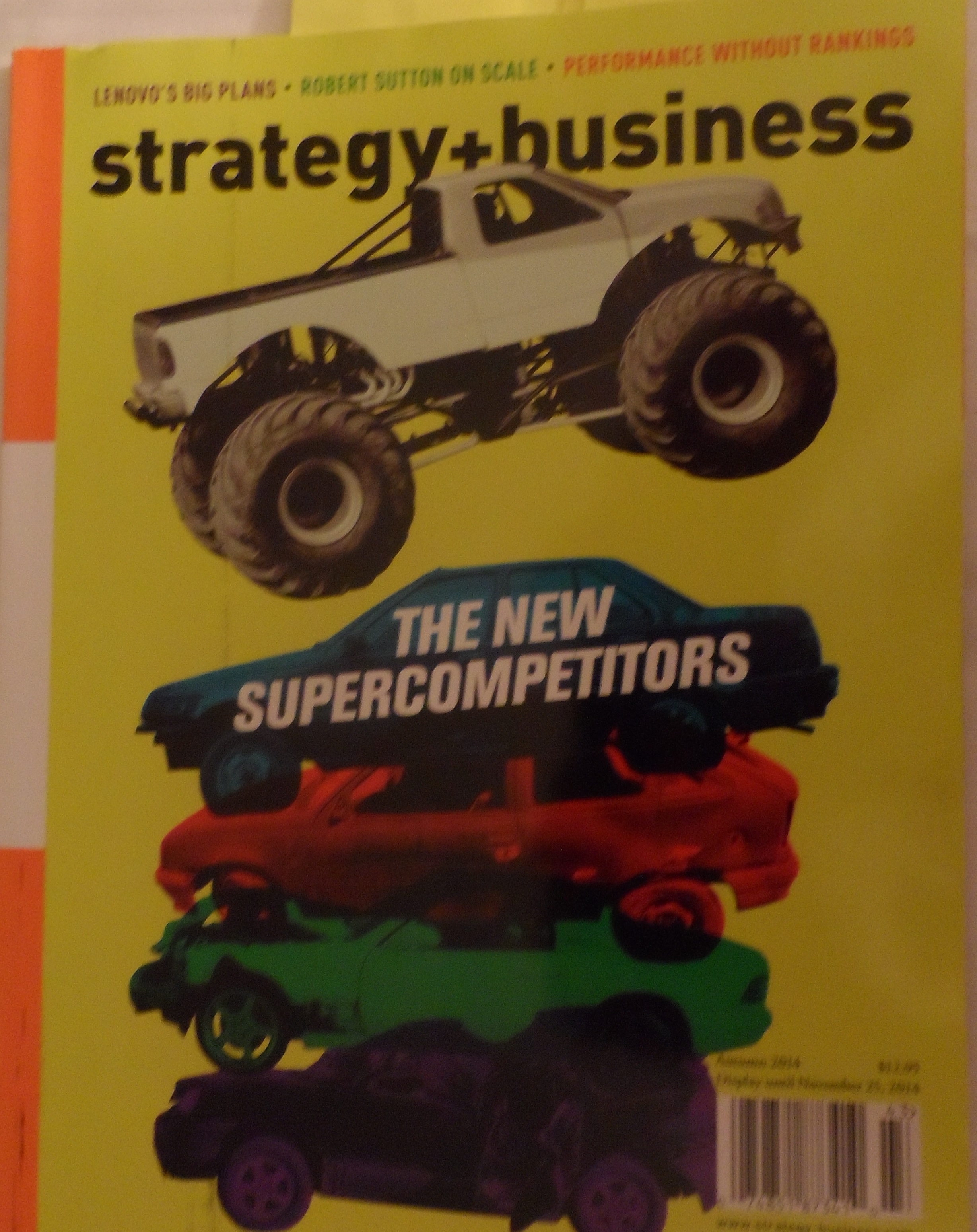Reshoring and performance reviews: Two priorities for business leaders

I was catching up on my business reading this weekend and came across two great articles. One piece, while obstensibly about re-shoring, is actually a great HR lesson for business and HR leaders. The other is a tour-de-force about the substantial problems with performance reviews.
I want every HR person out there to read these two articles.
The problem with performance reviews
Every HR and operational executive should run to get this article in Strategy + Business. Finally, someone explains the neuroscience about why the typical performance review is such a negative blow to engagement, retention, employee motivation, etc.
The authors explain how giving someone a ‘2’ ranking (on a 1 to 3 scale of performance) triggers all manner of fight/flight responses on the recipient. Amen!

When you tell someone who has really poured it on this year, that some artificial quota puts them at the very top of the 80 percent of folks getting a ‘2’, they’re either going to get mad or shutdown. They busted their butt for you or the firm and now you tell them that an arbitrary bell curve distribution means that they get less of a raise? You’ve insulted them twice. You told them they’re average AND you gave them a paltry raise. The fact that so many firms are ‘surprised’ at how employees react to these reviews (and why managers hate giving them) is stunning. Equally surprising is how companies will pour fortunes into trying to get employees more engaged when a big part of their disengagement is due to how little correlation there exists between their performance and their status/compensation.
In my past, I’ve seen this scenario play out time after time. The effects can be especially devastating to small groups who don’t have a huge population of employees. In a group, for example, with five people, only one person can get the ‘outstanding’ performance ranking as two winners would amount to 40 percent of the group’s members being given the highest ranking. I’ve also seen one person who’s been lucky that year bagging a big deal get the outstanding ranking although others have been consistently outstanding year after year.
Cut through this mechanical, flawed process and you’ll see organizations that send a signal to their workers that delivering just above mediocre results will get you average raises and continued tenure. There’s really no incentive to doing great work as it’s too random as to whether an individual can actually make it into the top 10 percent year after year.
But, it’s the type A, ambitious, aggressive, career-focused individual who really chafes at these performance determinations. They’ll see your conformance to an artificial banding as counter to their career aspirations. They’ll either, in the words of Dear Abby, “seek true love elsewhere” or turn into the Dilbert character Wally – a brilliant individual who walks around all day carrying a coffee mug and doing no work.
So, if you’re actively managing the bottom performers, then what do you need performance rankings/reviews for?
Great executives should always be counseling and culling low/underperformers from their ranks. If you don’t, you create a really bad morale problem in your firm. Your best and brightest see that bad or substandard performance yields the same job security that great performance yields. Trust me - your employees know who’s doing great work and who needs to get the boot. They’re just wondering when you, the boss, are going to grow a big enough backbone to oust this killer of productivity and earnings.
So, if you’re actively managing the bottom performers, then what do you need performance rankings/reviews for?
Hard core, traditional HR types believe that rankings/scores help to determine who gets the extra 1-2 percent for annual raises. Now, that’s another problem area. Salaries should be a healthy reflection of what the job market is paying for a similarly skilled person. A great manager/leader should help develop the talents and skills of all of their workers so that everyone (who wants to) can progress and earn/merit higher pay.
What people want from a review is guidance to get to the next level of their career. If the conversation is forward focused, helpful and specific, it will be received well. Backward focused annual reviews are actually of little value. If a person is ever surprised that they didn’t meet their own or their bosses expectations, then the supervisor has failed to provide a lot of timely feedback throughout the year.
The operative word is ‘conversation’. That conversation should be centered exclusively around helping the employee improve the asset side of their career balance sheet. What skills/assets have depreciated and need refreshing? What new assets have been created (think training, new responsibilities, thought leadership development, etc.) by this person?
Some executives have an incredibly narrow-minded view of their employees. They see most of them as "job" holders or "workers". They don’t seem them as real people with real career aspirations and dreams. Yes, some people just want a job and a steady paycheck. If they deliver to the median of your firm’s bell curve of performance, they won’t care what you tell them in a performance review. You know and they know that they’re not going anywhere. Just give them what they deserve and they’re good for another year. But, more people than many employers realize yearn for more. They want the supervisor’s job someday and want to know how to get it. Are you having that conversation?
I could write a thesis on the issue but I won’t. The authors of this fine piece did a great job on their handling of the subject. I can’t stress enough how their article needs to be a discussion item at the next Executive Committee meeting. And, shame on any HR team for trying to force feed another round of these reviews on their firm.
The HR problem in reshoring
Manufacturing is making a comeback in the U.S. But, are firms and their HR groups well-prepared for this phenomena? Probably not.
This MIT Sloan Management Review piece is a must read as it details the experiences of two major firms in their efforts to ramp up their manufacturing staff as part of a recommitment to reshoring. Unfortunately, the results were not great. One of the companies went through 6,500 workers in 10 weeks to get the 2,500 it needed all along.
“’We hired people off the couch,’ remarked one plant manager. As a result, it was not surprising that many workers didn’t have a clear picture of what the factory environment was like. As another manager noted, the long-term unemployed represented a major pool from which companies drew. Most new hires had little idea what they had signed up to do. They were prepared neither for the expectations placed on them nor the environment in which they would be working.”
I’ve recently interviewed manufacturing executives who have recaptured offshore business. In their quest to ‘China-proof’ their businesses, they’ve reimagined and reengineered their firms, their processes, their ERP/IT and their shop floor production equipment. In doing so, they’ve achieved dramatic improvements in productivity (i.e., increasing revenue per employee) with one executive able to point to their labor costs now down to 1.8 percent percent of costs of goods sold.
Yet in those conversations, there were also comments made about the challenges in finding the right kind of worker — today — to work in these new, more automated facilities. They needed responsible people who could be trusted with the safe, smart operation of entire production lines. They want people who aren’t operators of a single machine – they want a more savvy, dedicated team member that can take on a lot more responsibility.
This article is a great read because it puts very human faces on the problems that businesses encounter in acquiring workers in a new kind of manufacturing environment. The implications on on-boarding, recruiting, talent development, etc. are manifest.
Think about how much a manufacturing shop floor has changed in recent years. Smart plant systems now direct workers (not production supervisors). The technology savvy required to operate, program and maintain equipment has increased dramatically. Forklifts, for example, are increasingly more automated and smarter. Some now possess sensors to warn operators to slow down, to refuse to lift certain pallets (e.g., those known to weigh more than this forklift is rated to transport), etc. Workers are interacting with optic systems, scanners, sensors and new generations of machine tools.
It’s not just a smarter factory worker that’s needed in these smarter plants. It’s a worker with a different kind of attitude.
The question for business executives is: Can HR find these folks and what will they do to help the firm keep them?
The question for HR software developers is: What genius can you embed in your solutions that find a better kind of worker and how will your solutions assess their performance (without adversely impacting their future performance or longevity)?
Great questions for the executive team of today....